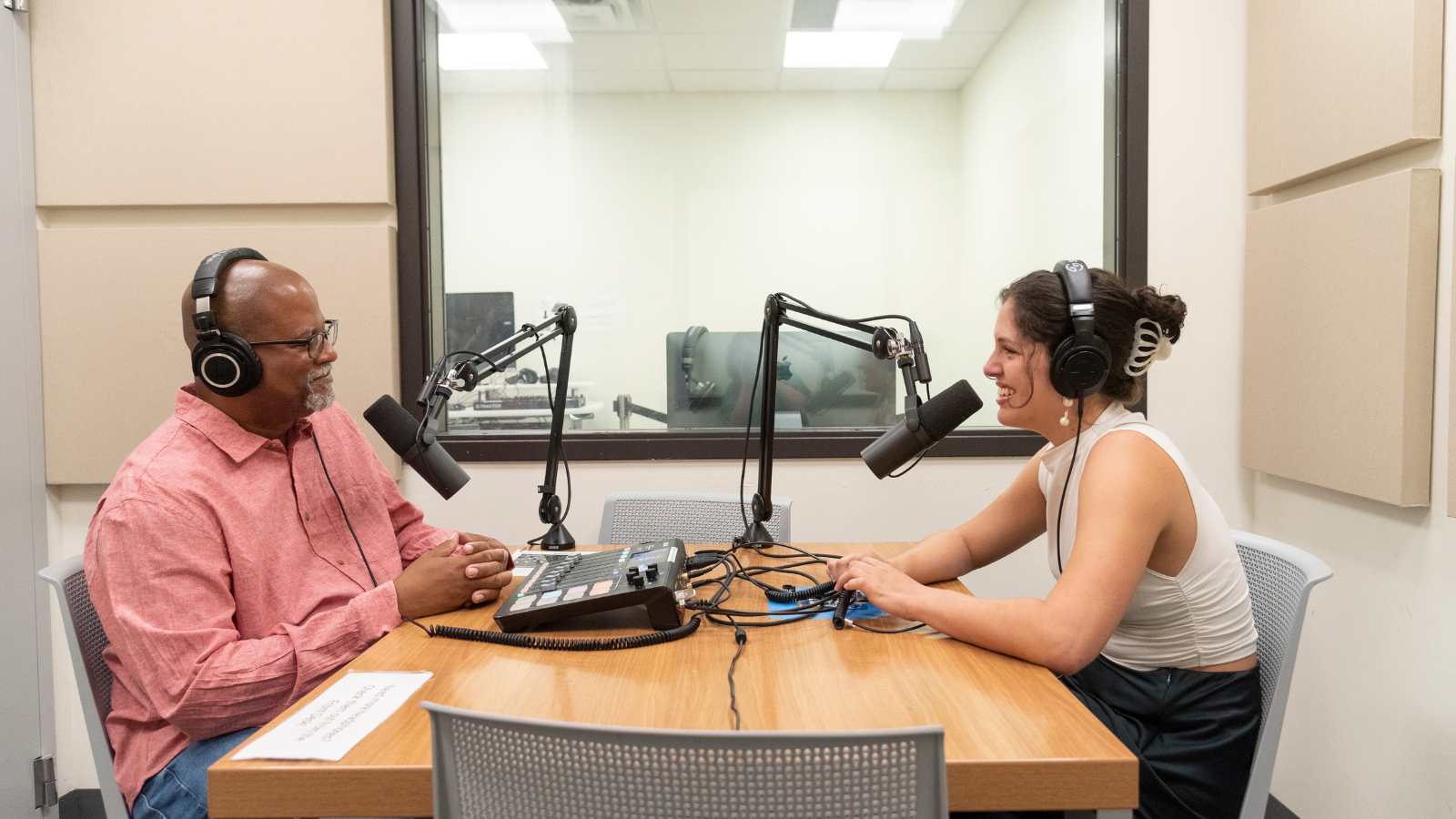Podcast Guidelines

Before You Begin
Ask yourself these questions before creating a podcast within your college, department, academic unit, or organization.
- What is the podcast about?
- Who is the podcast for?
- Is anyone at the university doing this type of content already?
- Who will find and schedule guests?
- Who is going to produce, host, and edit the content?
- Who will approve the content before publishing?
- Do I have the resources to purchase equipment or dedicate time to planning?
- How frequently will I release content?
- Do I have the time and ability to maintain a consistent podcast schedule?
Set Realistic Goals and Expectations
What do you want the outcome to be versus what does your leadership expect to happen?
Consistency Is Key
- Include your affiliation with Texas State University in your intro and any descriptions. Your intro should include basic information such as your podcast’s name, purpose/topic, host and guest names, and your affiliation with the university. Always use the full name of the university the first time you mention it: Texas State University.
- Release content regularly and on a specific schedule (ex: every Monday, every other Monday, or first Monday of every month).
- Keep the structure of each episode similar so that your audience can become familiar and comfortable with your format.
Promote the podcast via your existing outlets, such as social media and your department/unit website. Podcasts approved to be featured on the TXST Podcast Network may receive additional promotion support via the university's primary social media accounts.
Ensure the Quality of Sound
- Record using professional equipment and microphones.
- Record in a private room. Alkek One YouStar Studio rooms are available to university faculty, staff, and students to reserve.
- Use appropriate professional software to edit your content.
Required specs for audio
If you do not know what these standards mean or whether your recording meets these standards, please contact the Division of Marketing and Communications.
- Audio format: MP3
- Data rate: 128 kbits/sec
- Channels: Stereo
- Output sample rate: 44.100 kHz
- Encoding quality: Better
Artwork and Music
Create unique and on-brand artwork and music for your podcast series and episodes. Artwork for podcasts featured on the TXST Podcast Network must be submitted for approval when registering the podcast with Marketing and Communications.
If you need preexisting sound or music in your podcast, make sure it is licensed properly for use or is royalty-free music. Choose .wav for music files.
Media Consent
While creating your podcasts, please ensure that all necessary rights and permissions have been obtained for the material you plan to include in your podcast. If a podcast involves a student, faculty, staff, and/or guest speakers you must have a signed consent form on file.
Media consent forms are available via electronic signatures and can be captured using Adobe Sign. Search for the following depending on podcast guests:
- Podcast Release Form - Faculty/Staff (includes external guests)
- Podcast Release Form - Students
You are responsible for maintaining the confidentiality of sensitive information and for adhering to all Texas State University rules, regulations, policies, and procedures regarding security and confidentiality, including Family Educational Rights and Privacy Act (FERPA).
Hosting
Departments should consider Yuja for hosting audio podcasts. Yuja is Texas State's official video platform. It integrates with Canvas, the university's learning management system and should be able to handle your podcast hosting needs.
Other options for hosting podcasts would need to go through the formal software approval.
ADA Compliance
To be inclusive and in compliance with the Americans with Disabilities Act (ADA) law, here are four simple steps you should take to help ensure your podcast is accessible to everyone.
- Ensure the university webpage (Gato or WP Personal Sites) that includes your content is accessible.
- Transcripts are another accessibility must, but it’s important to note the distinction between a transcript and a script. Your transcript should include a description of any music, sound effect, or other background noise that is relevant to what’s happening in your podcast. Unintentional or accidental background noise doesn’t need to be included (e.g., a car horn), but any audible noises that contribute to the meaning of the episode should be included in the transcript. Once ready, be sure the transcript is easily located and available alongside the episode.
- Podcast platforms (e.g., Apple Podcasts / iTunes, Google Play, Stitcher, Spotify, Pandora, Amazon, etc.) allow you to include a summary for each episode. Make sure to include a link to your transcript for each podcast and label it as such so that anyone can easily locate and access the transcript for each episode directly.
- Promoting your podcast is an essential part of attracting and securing new listeners, so be sure your accessibility efforts carry through. Provide alt text with all social images and use accessibility-friendly hashtags. This means capitalizing the first letter of #EachWord in your hashtag so it’s better understood by screen readers. Also, if you’re using an audio snippet to tease an upcoming episode, be sure it includes closed captioning.
Source: essentialaccessibility.com
Additional Resources:
- Adobe Audition LinkedIn Learning options
- Digital Accessibility Transcripts
- Best Podcasting Tips for Beginners
- How to Record a Podcast with Two Mics
- 30 Best Podcast Questions
- 15 Actionable Tips for Podcast Interviewing
- How creators come up with great podcast interview questions
- How long should a podcast be
- Podcast tools and gear guides
- The Podcasters’ Studio
- Podcast Insights – Podcasting Resources
Podcast Registration
All podcasts run by faculty and staff that are directly affiliated with Texas State University divisions, departments, colleges, or programs must be registered with the Division of Marketing and Communications.
To be considered for the Texas State Podcast Network, a faculty or staff-run podcast on behalf of a TXST entity must be registered and meet TXST Podcast Network criteria.
